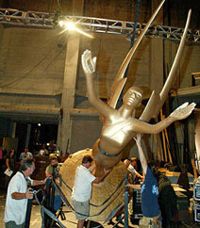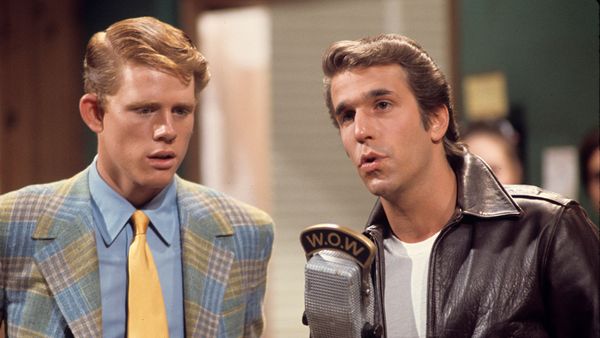The Academy of Television Arts and Sciences (ATAS), headquartered in Los Angeles, gives out the Emmy awards for prime time programs. The National Academy of Television Arts and Sciences (NATAS), based in New York City, handles the awards for daytime shows and for news and documentary programs. When you hear television award winners say, "I'd like to thank the academy," they are referring to either the ATAS or the NATAS.
We'll focus here on the prime time awards. Members of the ATAS, which was founded in 1946, work in the television industry. These are the people who vote on the awards. They pay a fee to be a member of the academy. The members are divided into peer groups, determined by specific areas of expertise within the industry. For example, performers are in one peer group, makeup artists and hair stylists are in another, and camera and videotape operators are in another. Nominees sometimes say that they are honored to be recognized by their peers; this is because it is the peer groups that vote in the first part of the Emmy voting procedure, narrowing the list of nominees.
The academy has an Awards Committee that handles the Emmys every year. The awards for prime time programs are presented in August or September, and to be eligible, shows had to be aired on broadcast or cable television during prime time (6 p.m. to 2 a.m.) between June1 and May 31. Also, they had to be seen in markets representing at least 51 percent of the television viewers in the United States. People who worked on eligible shows can nominate themselves for awards. Teams of people can enter in more than one category as long as each entry is for a different program. The entrants have to pay a fee, the amount of which is based on whether the nomination is commercial, individual or for a program, and the size of the team for team entries. Entrants can mail or fax in their entries.
Television producers often advertise in the trade press before the Emmy nominations are turned in, trying to get voters to notice their shows. And, of course, after the nominations are announced, more ads go out as the producers promote their shows' nominations.
The Emmy awards' categories correspond roughly to the peer groups and include specialties like: animation, art direction, casting, choreography, cinematography, commercials, costuming/costume design, directing, electronic camera work, engineering development, hair styling, lighting direction (electronic), main title design, makeup, music, nonfiction, performing, picture editing, program categories, sound mixing, sound editing, special visual effects, technical direction, video, voice-over performance and writing. And within each of the broad classifications, there are awards for achievement in more specific categories, such as "outstanding directing in a comedy series" or "outstanding lead actress in a drama series."A complete list is available at the Emmy Web site.





